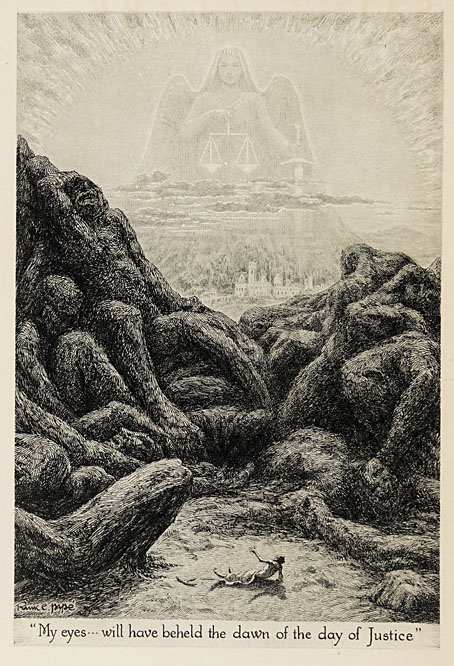
I was asked recently if I’d ever written anything about British illustrator Frank C. Papé (1878–1972). The answer was no for two reasons, the first being that where book illustration is concerned I like to be able to point to whole books, and until recently there hasn’t been much of Papé’s work available in complete editions. The second reason is that Papé’s illustration is often broadly comic, to a degree that had he been born a generation or two later he might have been drawing humorous comic strips or editorial cartoons. Papé was very adept on a technical level but his drawings aren’t always to my taste so I’ve never spent much time looking for his books.
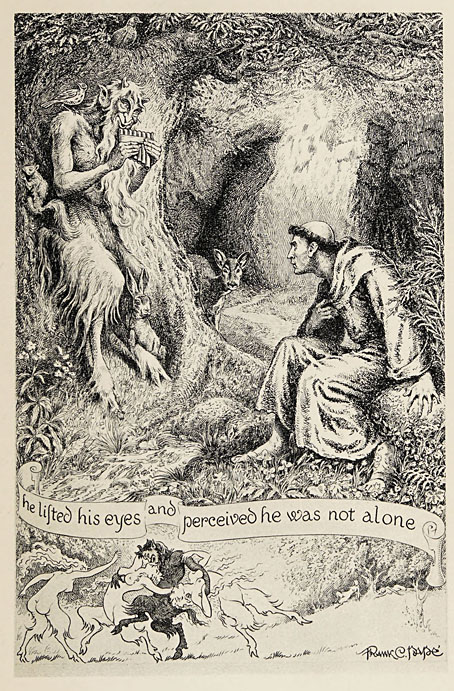
The first of those caveats has been ameliorated by recent uploads at the Internet Archive which include this volume, one of several Anatole France editions with Papé illustrations. The Well of Saint Clare (1928) is a collection of religious stories set in the medieval era. The book appeared a few years after Papé had illustrated James Branch Cabell’s Jurgen: A Comedy of Justice, a quasi-medieval fantasy which was the subject of a celebrated obscenity case in the USA. Anatole France’s satires were almost as contentious for a time—the Vatican put his books on their prohibited list—which leaves me wondering whether Papé had a natural inclination for risqué material or whether his publishers pushed him in this direction. Probably a little of both.
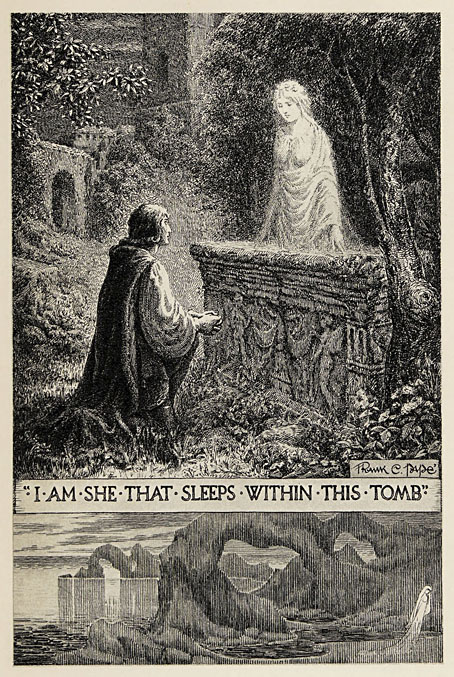
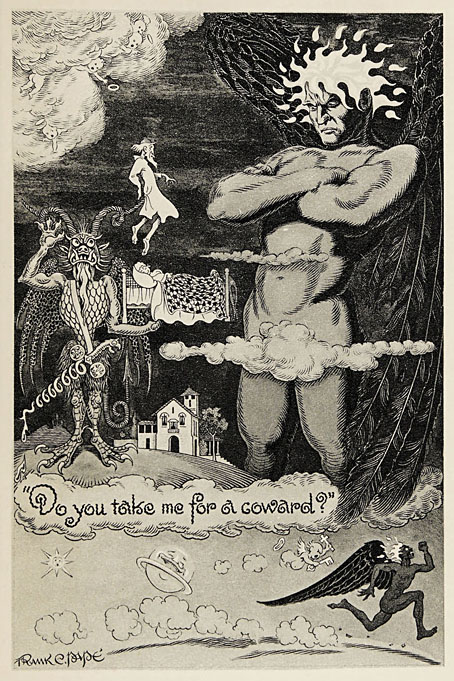
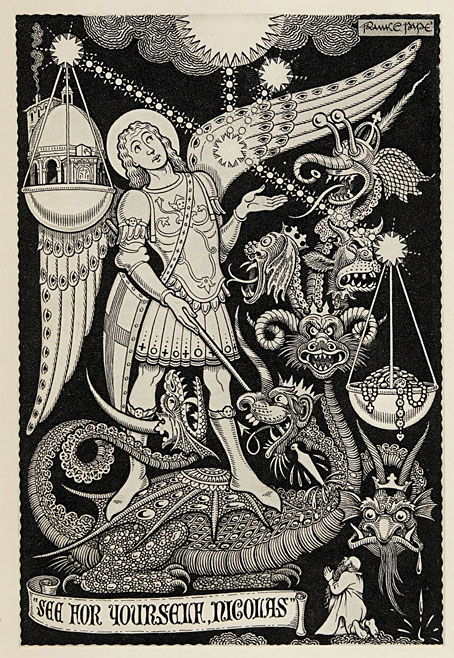
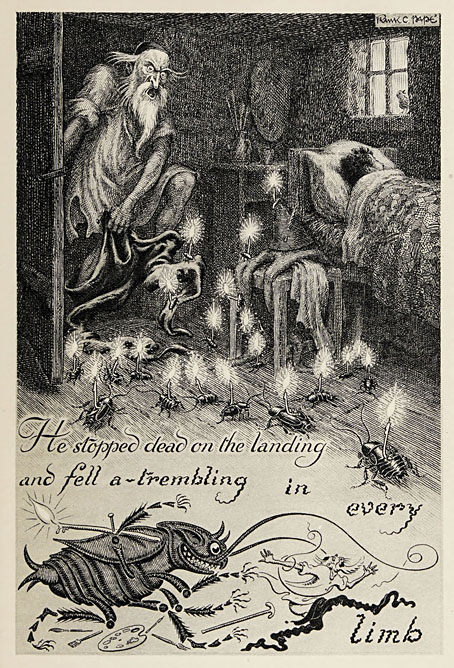
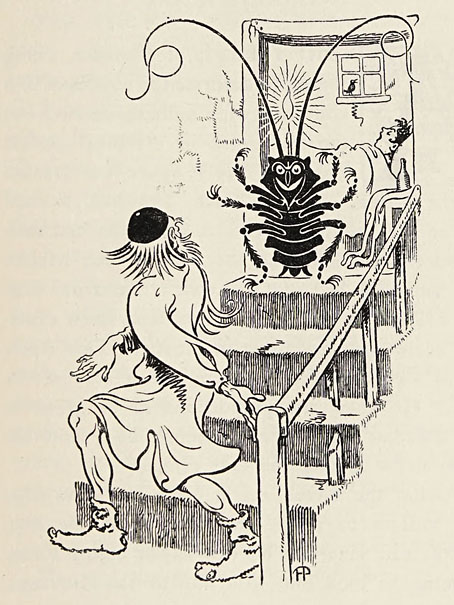
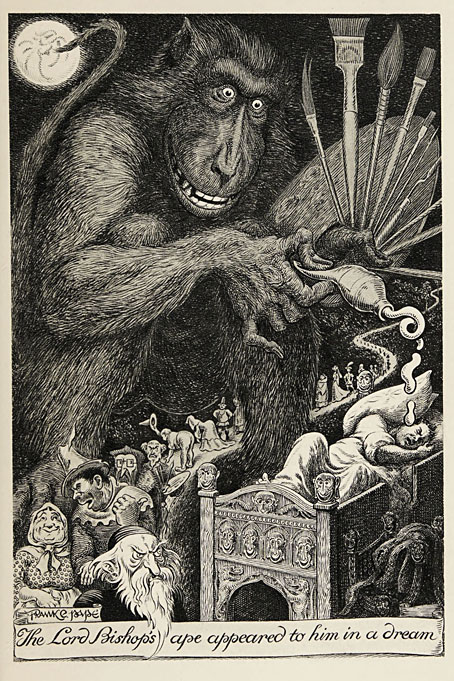

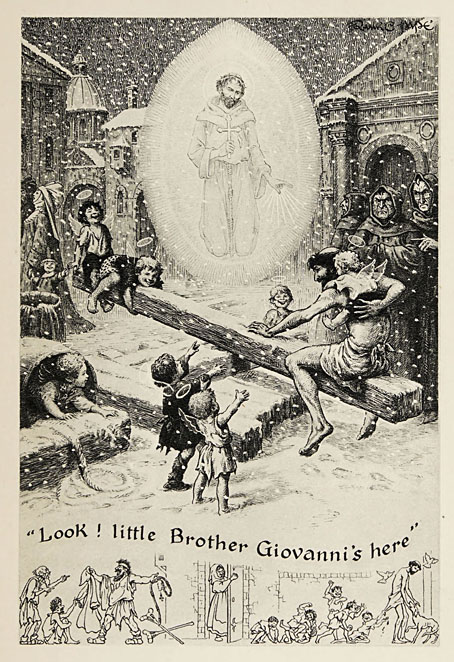
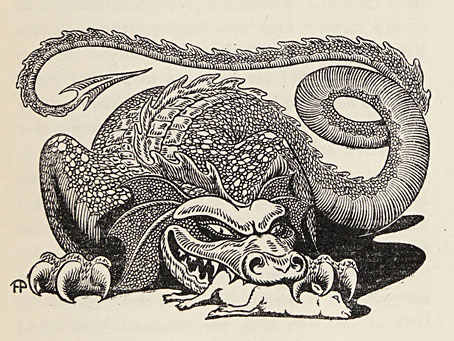
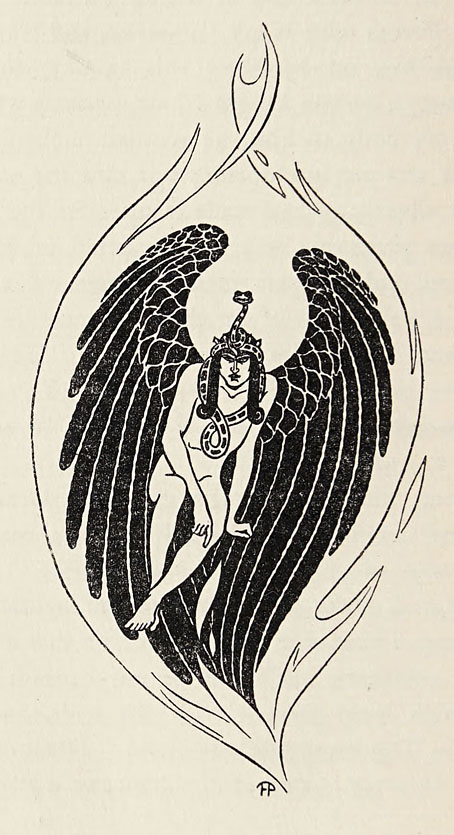
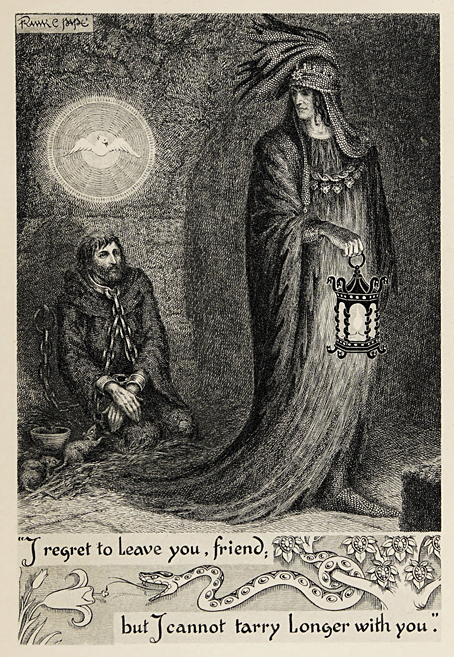
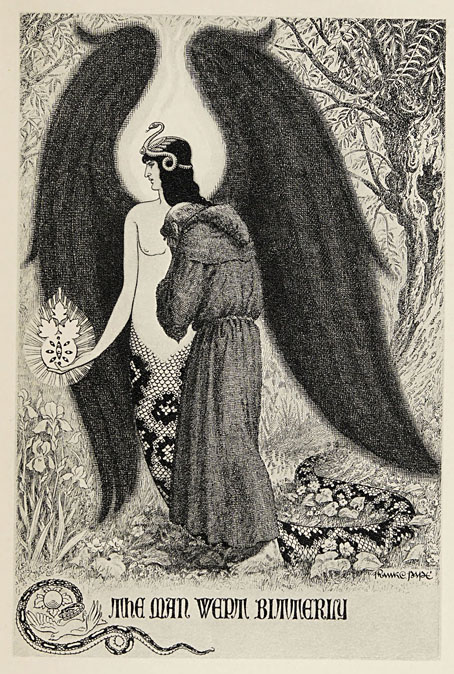
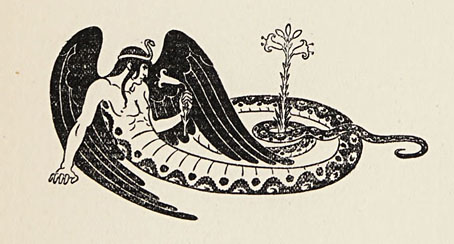
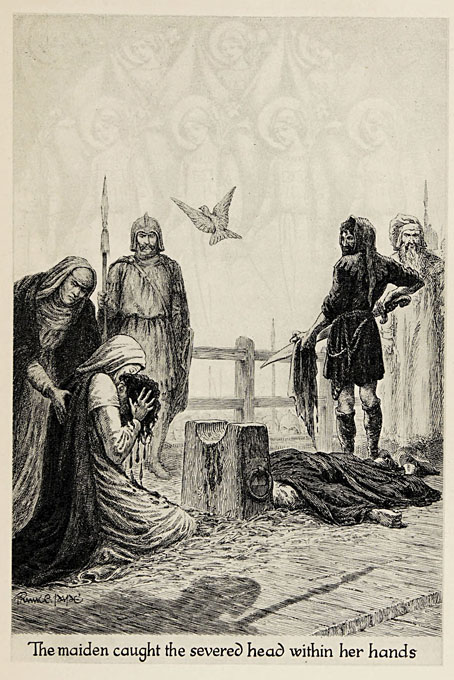

Elsewhere on { feuilleton }
• The illustrators archive
Previously on { feuilleton }
• The art of Ray Frederick Coyle, 1885–1924

The phallic sword hilt in that last one is something else. As a former habitue’ of used book shops, I’ve seen some of his work over the years; have read nothing at all about him though. A few of his vignettes remind me a bit of Mahlon Blaine; but much of his full-page illustrations are as commonplace and anonymous as any you might see in the yellowing pages of a Victorian novel.
Ah but Marlon Blaine can’t hold a candle to FCP! As the owner of many yellowing Victorian novels, I think Pape’s works are rather splendid. Nothing wrong with a good laugh either…
Monster Brains has links to more complete (fairly non-satirical) texts with illustrations here:
>http://monsterbrains.blogspot.com/2013/05/frank-cheyne-pape.html
inc.
The Gateway To Spenser. Tales retold by Emily Underdown from “The faerie queene” of Edmund Spenser (1913)
The Pilgrim’s Progress (1910)
The Diamond Fairy Book (1911)
The Story Without An End (1913)
The Russian story book : containing tales from the song-cycles of Kiev and Novgorod and other early sources (1916)
I just mentioned The Well of St. Clare & Papé in an upcoming tribute I just wrote on Brian Stableford for Dead Reckonings (Hippocampus Press). I’ll send along Papé’s illos for Tales from Shakespeare if I run across them–an amazing frontis of Ariel whipping an Innsmouthian Caliban!
I dote on Papé (please see previous Feuilleton posts on Henry Keen for similarities) AND Blaine (who did THE definitive Vathek illustrations in my opinion. And a slipcas’d copy in me bookcase
blessedly).
It’s all good in all their cases, slip or no.
For completists sake: The archived St. Clare does NOT have the superb endpapers here:
>https://www.facebook.com/photo/?fbid=10218345664936234&set=gm.2592092390833311
from
>https://www.facebook.com/groups/fcpape
The author Dennis Wheatley used a bookplate designed by Frank C. Papé; it’s very similar to the second image posted by John here. An image of this ex libris bookplate (plus further detail) can be found in Lew Jaffe’s CONFESSIONS OF A BOOKPLATE JUNKIE blog here:
http://bookplatejunkie.blogspot.com/2014/05/some-recent-bookplate-purchases.html